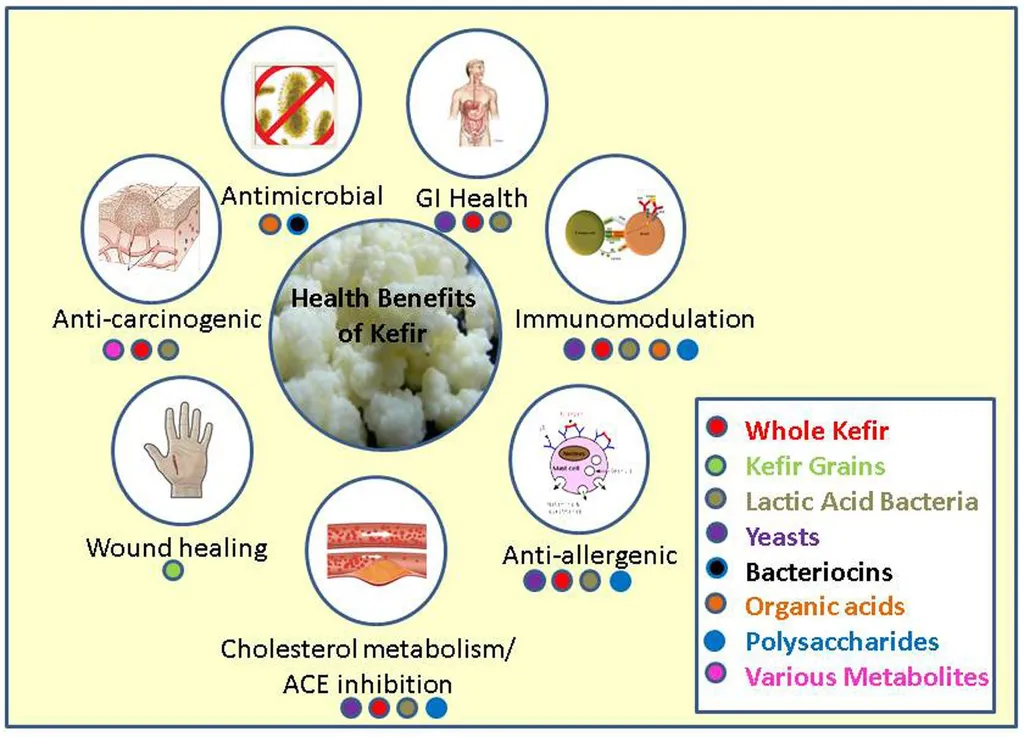In the heart of Iran, where traditional dairy products have been a staple for centuries, a groundbreaking study is reshaping our understanding of natural food preservation. Nila Vaysi, a researcher from the Department of Biology at Azarbaijan Shahid Madani University in Tabriz, has delved into the genetic makeup of Lactiplantibacillus plantarum, a bacterium found in these traditional dairy products, to uncover its potential as a powerful biopreservative.
The study, published in the journal ‘Applied Food Research’ (translated from Persian as ‘Research in Food Applications’), examined 43 isolates of L. plantarum, screening them for the presence of 12 different plantaricin genes—genes responsible for producing antimicrobial peptides known as plantaricins. These peptides have the potential to inhibit the growth of harmful pathogens, making them a natural and effective alternative to chemical preservatives.
Vaysi and her team assessed the antimicrobial activity of each isolate against six pathogens, including Bacillus cereus, Yersinia enterocolitica, Salmonella enterica, Listeria monocytogenes, Escherichia coli, and Staphylococcus aureus. The results were promising, with inhibition zones ranging from 5 mm to 20 mm. “The most significant inhibition was observed in B. cereus and Y. enterocolitica,” Vaysi noted, highlighting the potential of these bacteria in food safety.
But what truly sets this study apart is its use of machine learning. The researchers employed a Random Forest model to establish a connection between the plantaricin gene profiles and the antimicrobial activity of the isolates. The model achieved an impressive accuracy of 85% and an R² of 0.62, indicating a robust predictive capability.
“This integration of targeted genomics with machine learning offers a practical approach for selecting strains optimized for food preservation and probiotic applications,” Vaysi explained. The study found that strains with a broad repertoire of plantaricin genes, such as isolates 405 and 465, demonstrated strong, multi-target inhibition. Conversely, some isolates with limited gene sets, like isolate 954 containing only the plnG gene, displayed potent but highly specific activity.
The implications of this research are vast, particularly for the food industry. By harnessing the power of natural antimicrobials, food manufacturers can reduce their reliance on chemical preservatives, meeting the growing consumer demand for clean-label, natural products. Moreover, the use of machine learning in this context paves the way for more efficient and targeted strain selection, potentially revolutionizing the field of biopreservation.
As we look to the future, this research could shape the development of new food preservation technologies, enhancing food safety and shelf life while aligning with consumer preferences for natural and sustainable solutions. In the words of Vaysi, “This study opens up new avenues for exploring the potential of L. plantarum in food preservation and probiotic applications, contributing to a safer and more sustainable food supply.”
In an era where food safety and sustainability are paramount, this study offers a glimpse into the future of food preservation, where nature’s own defenses are harnessed to protect our food supply. The integration of genomics and machine learning in this research not only advances our scientific understanding but also holds significant commercial potential for the food industry. As we continue to explore the potential of natural antimicrobials, we move closer to a future where our food is not only safe but also sustainably preserved.

